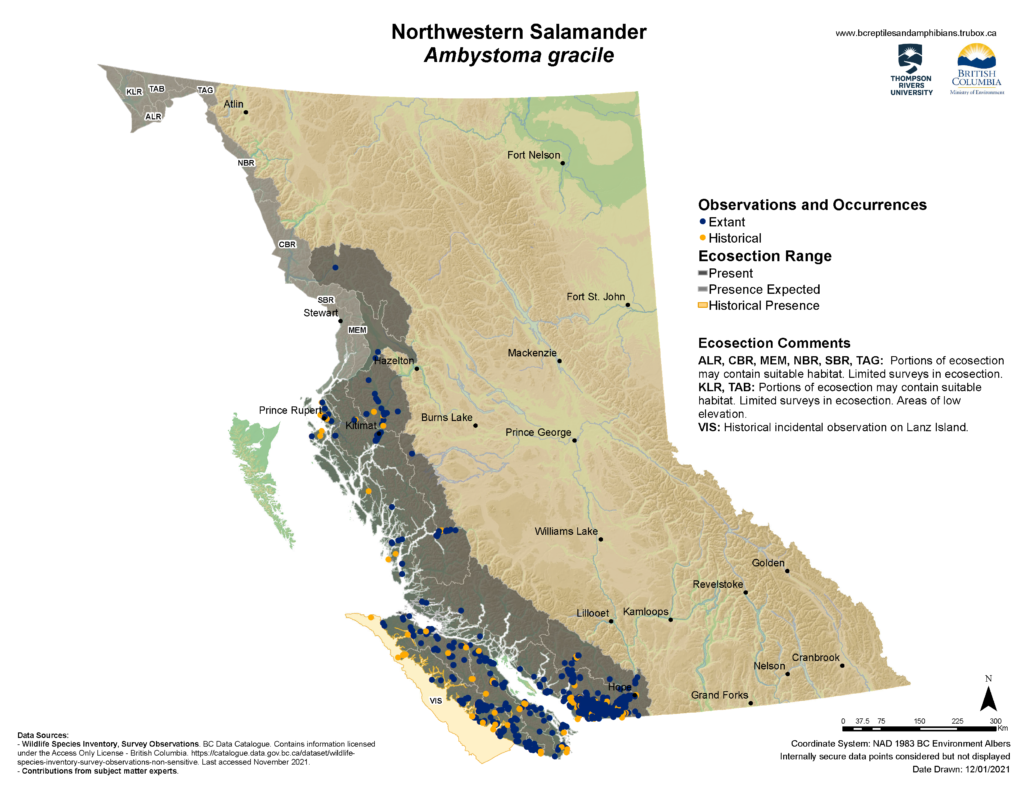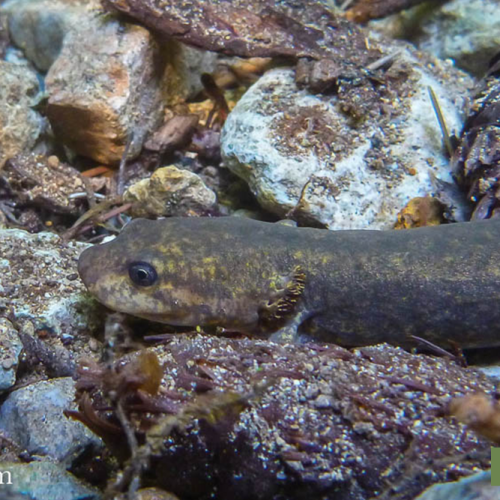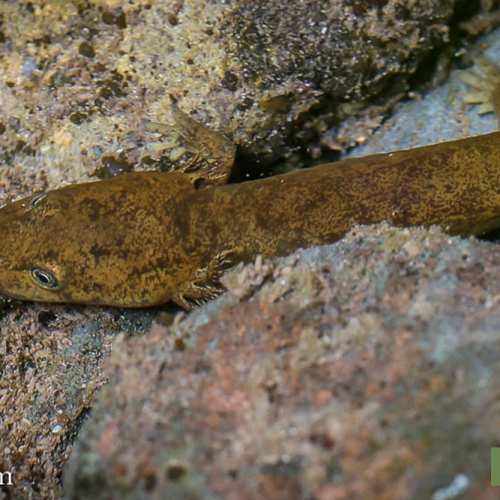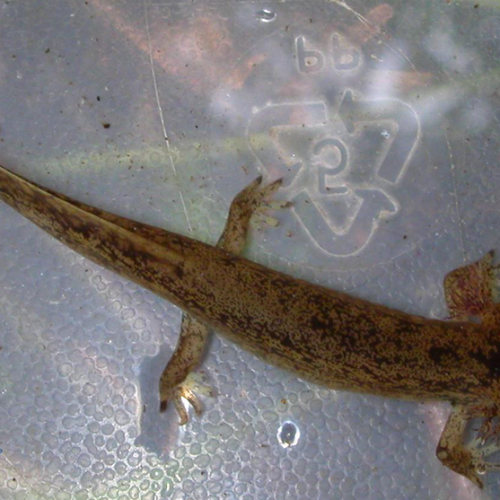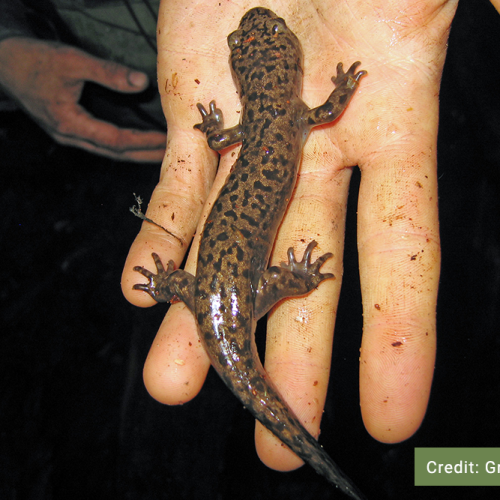Credit: John Clare
Coastal Giant Salamander
Dicamptodon tenebrosus
Description
Other names: Pacific Giant Salamander
The Coastal Giant Salamander is the only member of family Dicamptodontidae in Canada. They are the largest species of salamander in Canada, growing up to 30 cm in total length with broad heads and thick bodies. They have 12-13 indistinct costal groovesDefinition:Grooves along the sides of a salamander’s body that increase the surface area of the skin and creates channels for water to flow and collect on their body. This is important to prevent their skin from drying out., a laterally compressed tail, and dark, hardened toe tips specialized for digging and climbing. They are typically dark brown or black with a marbling pattern of tan or gold that tends to fade as they age and an off-white or light brown belly. neotenicDefinition:The retention of juvenile characteristics in an adult. In amphibians, particularly amongst salamanders, neotenic individuals mature to a reproductive stage without fully undergoing the process of metamorphosis from aquatic larva to land-based adult. individuals are not uncommon, and tend to grow slightly larger than terrestrial forms. Aquatic individuals are more often slate-gray to black and retain smaller gills compared to other neotenic salamander species, as they typically reside in more oxygen-rich environments that do not require as much gill surface area. Coastal Giant Salamander larvae have broad heads with feathery gills, front and back legs, and an obvious tail fin.
Listen to the Indigenous words for “salamander” here!
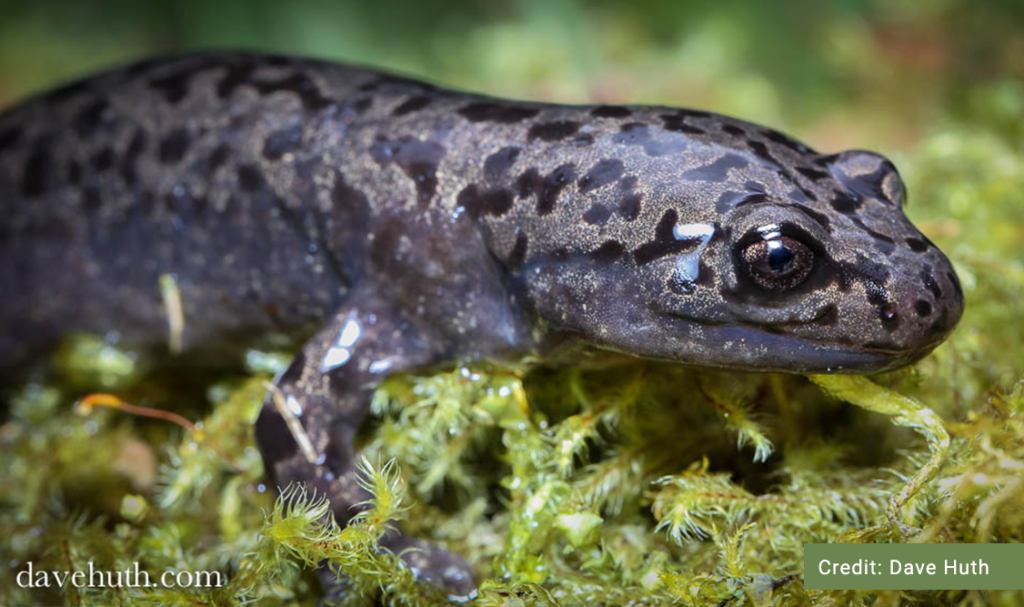
Similar Species
No other species of salamander in the range of the Coastal Giant grows quite as large and has a marbled brown or gold patterning. The Northwestern Salamander also grows quite large, but has parotid glandsDefinition:An external skin gland on the back, neck, and/or shoulder of some toads, frogs, and salamanders, usually visible as a bump. It can secrete a number of milky alkaloid substances which help deter predators., and is usually a uniform dark colour. The larval forms of other B.C. salamanders are not large enough to be confused with neotenicDefinition:The retention of juvenile characteristics in an adult. In amphibians, particularly amongst salamanders, neotenic individuals mature to a reproductive stage without fully undergoing the process of metamorphosis from aquatic larva to land-based adult. forms of the Coastal Giant Salamander.
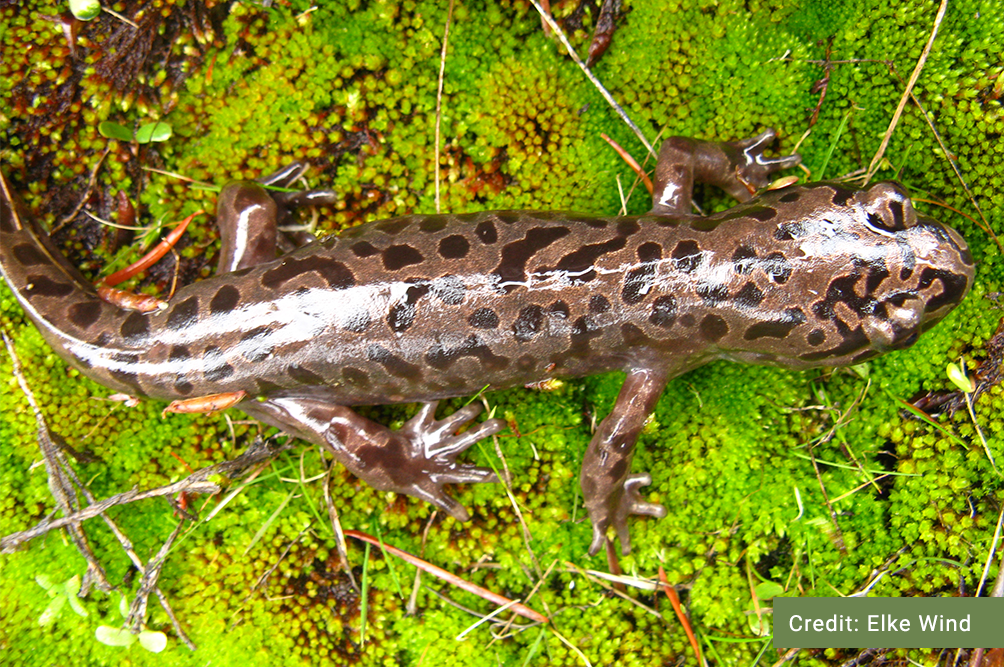
Coastal Giant Salamander
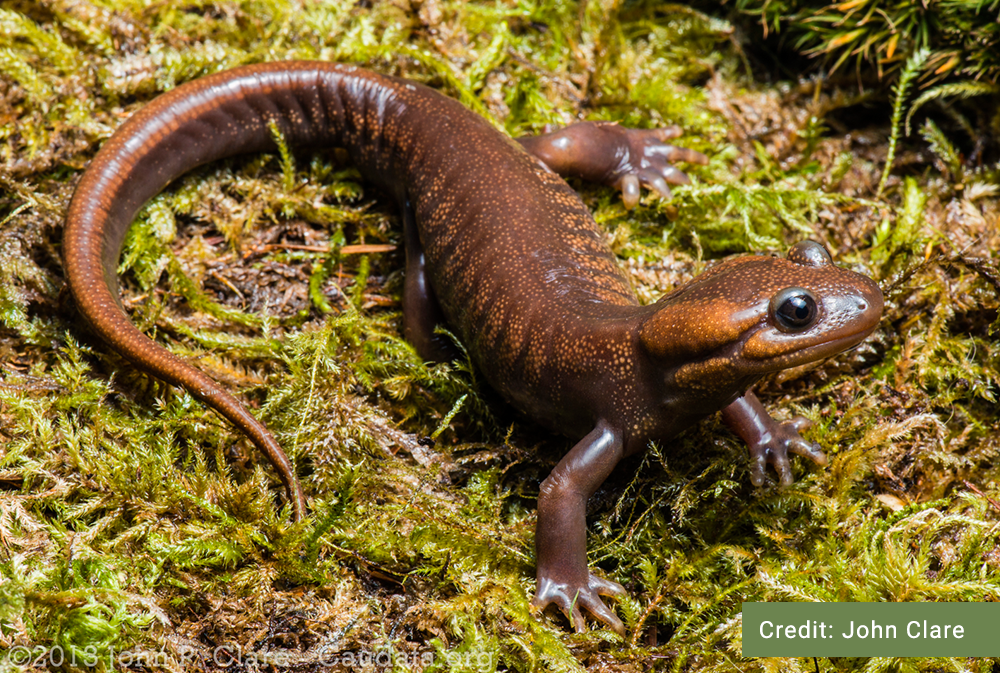
Northwestern Salamander
Distribution
Habitat
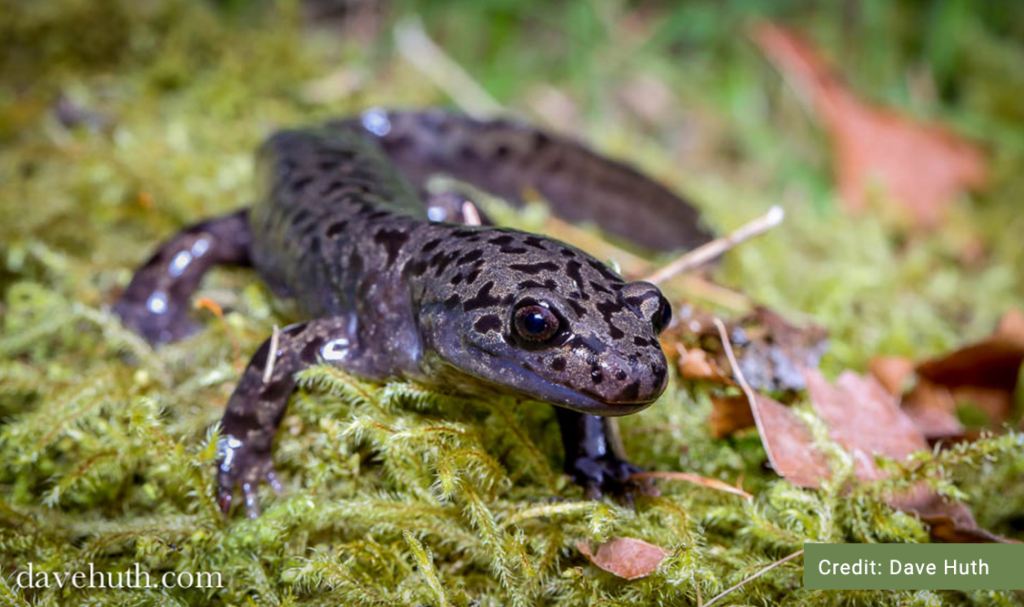
Reproduction

Diet
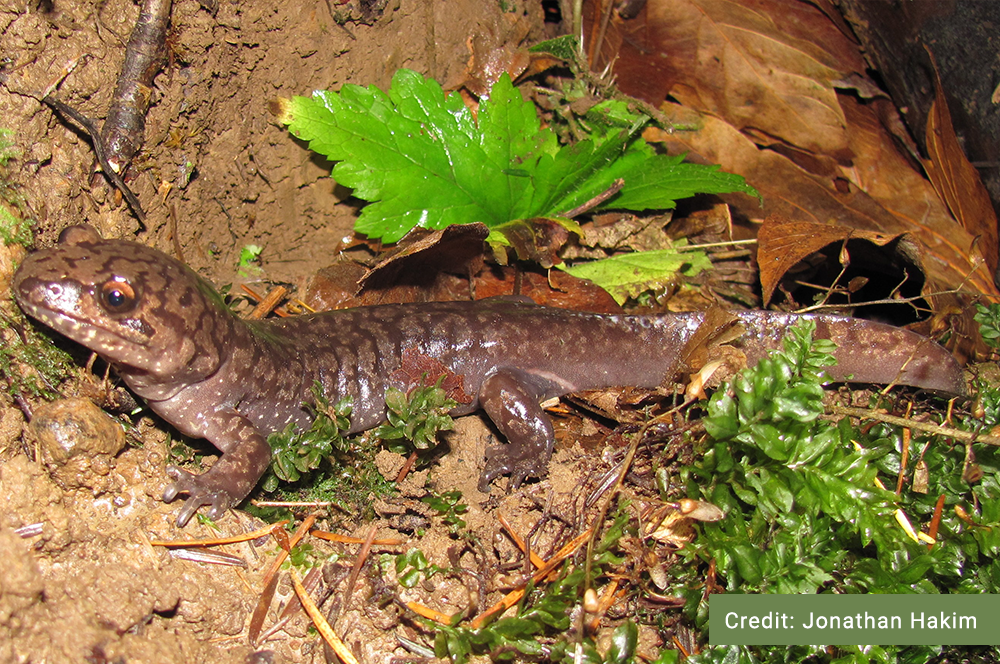
Conservation Status
Global: G5 (2003)
COSEWIC: T
SARA:1-T (2003)
Provincial: S2S3 (2016)
BC List: Blue
Learn more about conservation status rankings here
Threats
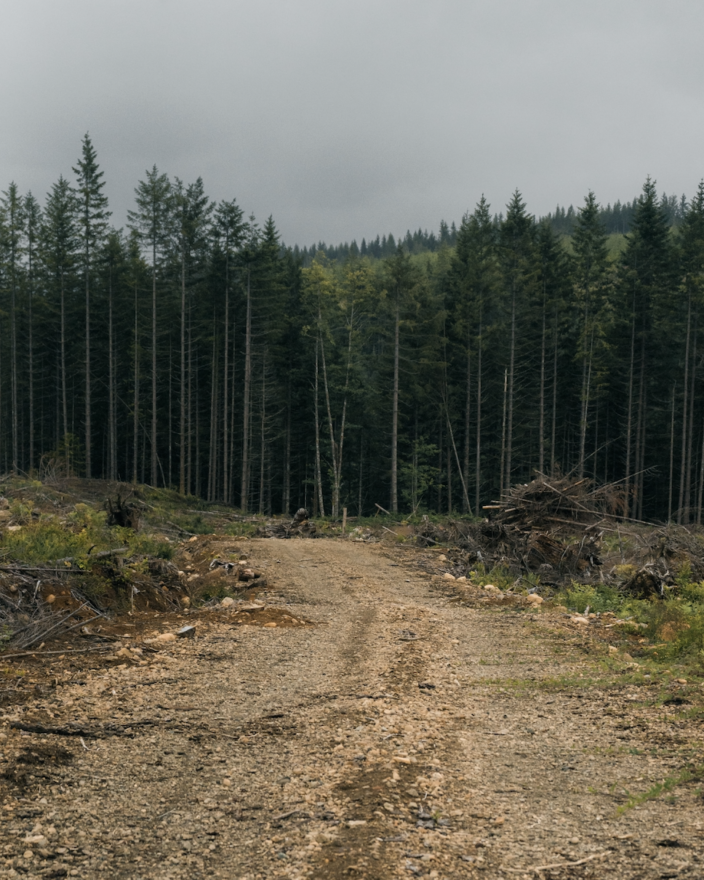
Did You Know?
Species Account Author: Marcus Atkins
B.C. Conservation Data Centre. 2005. Species Summary: Dicamptodon tenebrosus. B.C. Minist. of Environment. Available: https://a100.gov.bc.ca/pub/eswp/ (accessed Jun 7, 2021).
B.C. Conservation Data Centre. 2016. Conservation Status Report: Dicamptodon tenebrosus. B.C. Minist. of Environment. Available: https://a100.gov.bc.ca/pub/eswp/ (accessed Jun 7, 2021).
B.C. Conservation Data Centre. 2021. BC Species and Ecosystems Explorer. B.C. Minist. of Environ. Victoria, B.C. Available: https://a100.gov.bc.ca/pub/eswp/ (accessed Jun 7, 2021).
COSEWIC. 2014k. COSEWIC assessment and status report on the Coastal Giant Salamander Dicamptodon tenebrosus in Canada. Committee on the Status of Endangered Wildlife in Canada. Ottawa. xii + 53 pp.
Environment and Climate Change Canada. 2017s. Recovery Strategy for the Coastal Giant Salamander (Dicamptodon tenebrosus) in Canada. Species at Risk Act Recovery Strategy Series. Environment and Climate Change Canada, Ottawa. 2 parts, 34 pp. + 42 pp.
Johnston, B. and L. Frid. 2002. Clearcut logging restricts the movements of terrestrial Pacific giant salamanders (Dicamptodon tenebrosus Good). Canadian Journal of Zoology 80: 2170-2177.
http://a100.gov.bc.ca/pub/eirs/finishDownloadDocument.do?subdocumentId=7966
http://www.canadianherpetology.ca/species/species_page.html?cname=Coastal%20Giant%20Salamander
https://linnet.geog.ubc.ca/efauna/Atlas/Atlas.aspx?sciname=Dicamptodon%20tenebrosus

